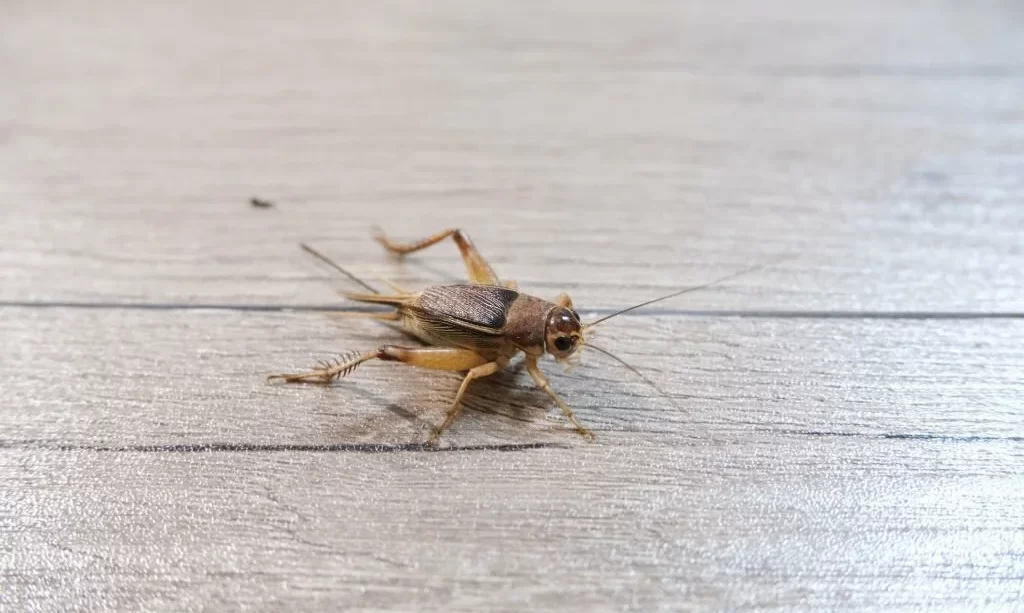Crickets, those small, chirping insects that seem to appear in the warm summer nights, often leave us curious about what exactly captivates them. Whether it’s the rhythmic sounds of their chirping or their presence in various landscapes, crickets hold a unique fascination. In this exploration, we delve into the intriguing world of crickets and unravel the factors that attract them. From the environmental conditions that influence their behavior to the distinct role they play in the natural world, understanding what draws crickets can provide valuable insights into the complex tapestry of life on Earth.
Crickets
Crickets belong to the family Gryllidae, a diverse group of insects characterized by their elongated bodies, large hind legs, and distinctive chirping songs produced by rubbing their wings together. These sounds serve multiple purposes, from attracting mates to establishing territory and communication. The chorus of cricket calls is a hallmark of warm summer evenings in many regions.
Crickets are an essential part of various ecosystems, contributing to nutrient cycling and acting as a food source for numerous animals, including birds, reptiles, and other insects. Their role in these ecosystems highlights the interconnectedness of life in nature.
Environmental Factors
Several environmental factors profoundly influence cricket behavior and distribution. These factors are key to understanding what attracts crickets:
- Temperature: Crickets are ectothermic, meaning their body temperature depends on their surroundings. They are more active and chirp more frequently in warmer temperatures, making the summer evenings particularly resonant with their songs.
- Humidity: Crickets are often attracted to humid environments. High humidity levels are conducive to their survival and are associated with favorable breeding conditions.
- Light: Crickets are generally nocturnal insects. They are attracted to darkness and may hide during the day to avoid exposure to light. Artificial light sources, such as streetlights, can disrupt their natural behavior and lead them to congregate around these sources.
Understanding these environmental factors is essential in deciphering what draws crickets to specific areas and why their presence can be more pronounced in certain seasons or conditions. It’s this intricate balance of nature’s elements that gives us a glimpse into the captivating world of crickets and their role in the ecosystems they inhabit.
Food Sources
Crickets are opportunistic feeders, and their diet primarily consists of plant matter and various organic materials. They are especially attracted to decaying plant material, such as fallen leaves, rotting wood, and decomposing vegetation. This attraction to decaying matter plays a crucial role in nutrient cycling, as crickets help break down dead plant material and return essential nutrients to the ecosystem.
Crickets may also feed on fungi, which are an abundant food source in many environments. Fungi provide not only sustenance but also an essential source of moisture for crickets, contributing to their survival in dry conditions.
In addition to plant material, crickets may opportunistically consume other small invertebrates, such as dead insects. This scavenging behavior allows them to adapt to a range of food sources, making them more resilient in various ecosystems.
Shelter and Habitat
Crickets are often attracted to specific types of shelters and habitats that offer the darkness and moisture they prefer. They seek refuge in environments that provide protection from predators and adverse weather conditions. Some common shelters and habitats for crickets include:
- Underground Burrows: Many cricket species construct underground burrows or tunnels, providing them with a safe and humid environment. These burrows help them avoid predators and regulate their body temperature.
- Leaf Litter: The layer of fallen leaves and decaying organic matter on the forest floor is an ideal habitat for crickets. It offers both shelter and food sources, creating a favorable environment for these insects.
- Grass and Vegetation: Crickets can be found in grassy areas, where they take shelter among the vegetation. These areas provide a source of humidity and a convenient location to find food.
- Dark and Damp Locations: Crickets are often attracted to dark and damp environments, such as crevices, rocks, and damp cellars. These spaces offer the moisture and protection they need for survival.
Understanding their preferred habitats and shelters sheds light on why crickets may be more abundant in specific ecosystems. The availability of these conducive conditions influences their distribution and abundance, making them a fascinating component of various landscapes and natural ecosystems.
Mating and Communication
One of the most captivating aspects of crickets is their intricate mating and communication rituals. Crickets are well-known for their characteristic chirping, a behavior primarily exhibited by males. They produce these chirping sounds by rubbing their wings together, creating a unique acoustic signal. While the exact pattern and purpose of chirping can vary between species, it generally serves several key functions:
- Attracting Mates: Male crickets use their songs to attract females. These songs can be seen as musical declarations of their vitality and fitness as potential mates. Female crickets listen to these songs and select their partners based on the quality of the serenade.
- Territorial Defense: Crickets also use their chirping as a means of establishing and defending territory. The loudness and persistence of their songs can deter other males from encroaching on their turf.
- Communication: Beyond mating and territory, crickets communicate with each other through their songs. These acoustic signals can convey information about food sources, dangers, and other aspects of their environment.
Understanding the role of chirping and stridulation in cricket communication highlights the complexity of their behavior and adds to the allure of these tiny musicians in the world of insects.
Frequently Asked Questions
Why do crickets chirp louder at night?
Crickets tend to chirp louder at night because the sound travels better in cooler, denser air. The evening hours are also when they are most active in searching for mates.
How do crickets find each other through chirping?
Female crickets listen to the songs of males to find potential mates. They can detect the pitch, rhythm, and duration of the songs to assess the fitness of the male.
Do crickets chirp year-round?
Crickets are most active and chirp more frequently during the warmer months, primarily in spring and summer. In colder regions, they may become less active or enter diapause during the winter.
Can you keep crickets as pets?
Yes, crickets are sometimes kept as pets, particularly for their chirping. However, they require specific care, including suitable habitats and food.
Conclusion
Crickets, with their enchanting songs, captivating behavior, and important ecological roles, offer a glimpse into the remarkable world of insects. Their attraction to environmental factors, such as temperature and humidity, their role in nutrient cycling through their choice of food sources, and their preference for specific shelters and habitats contribute to their significance in various ecosystems.
While their chirping is a source of fascination and sometimes wonder, it serves essential functions in mating, territory establishment, and communication. The world of crickets is a reminder that even the smallest creatures can hold profound ecological and aesthetic importance. As we listen to their melodies in the night, we become witnesses to the delicate intricacies of nature, where each species, no matter how small, plays a part in the grand symphony of life on our planet.




